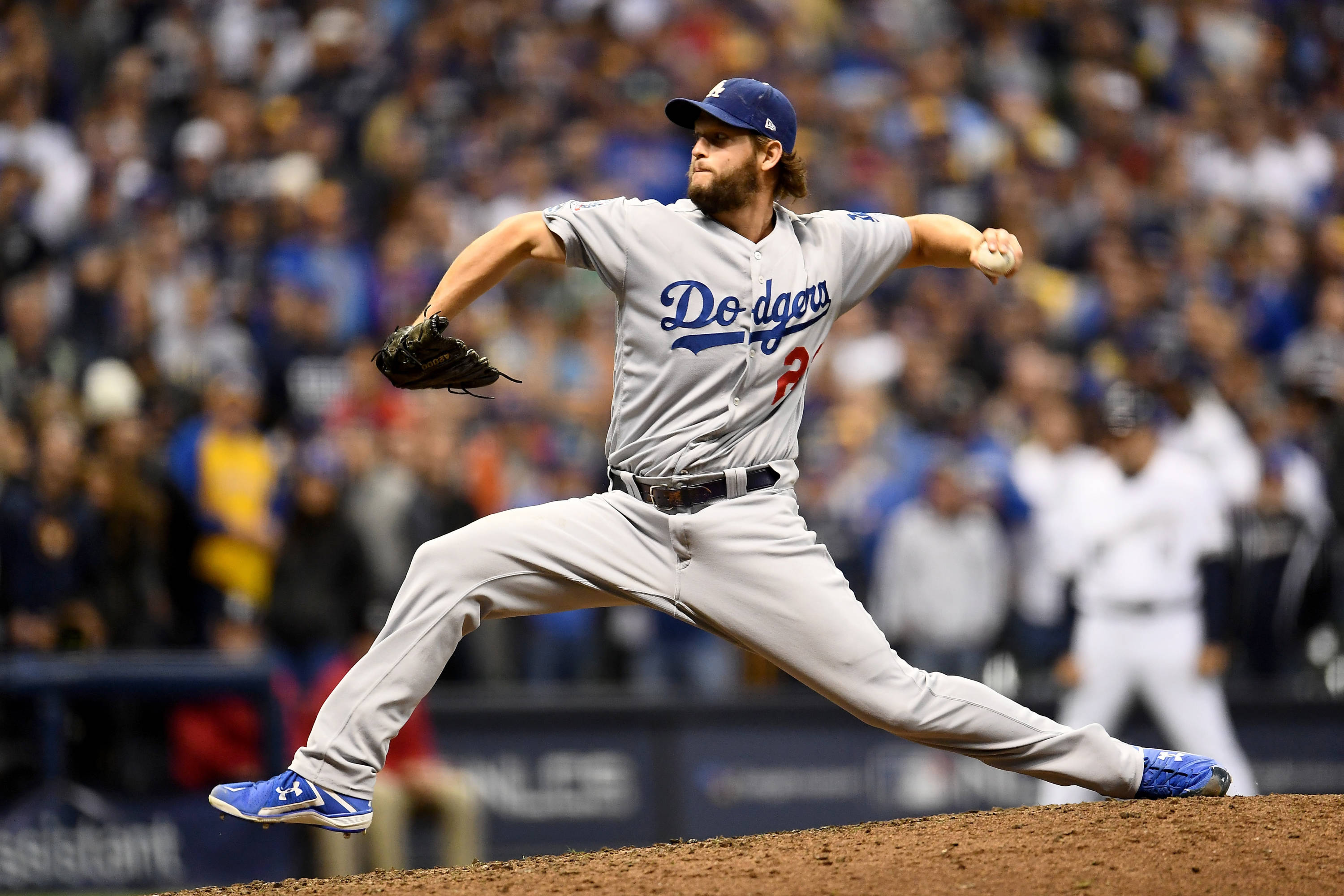Ignore the Home Runs, Clayton Kershaw is Just Fine

After battling through several injuries the past few seasons, Clayton Kershaw has put on an impressive performance in 2019.
The 31-year-old southpaw is 13-4 with a 2.96 ERA, 165 K’s, 33 BB’s and a 1.01 WHIP, which for practically anyone else in the league, would be a career year.
But we’re talking about Clayton Kershaw, perhaps the greatest pitcher of this generation.
From 2011-2014 alone, Kershaw collected three Cy Young Awards, an MVP, four all-star appearances, a Gold Glove Award, a pitching triple crown, a no-hitter, and led the National League in ERA all four seasons and wins and strikeouts in two.
And that was just over four years. I could go on with his accomplishments, but I’m here to talk about the 2019 version of Clayton Kershaw.
His injuries have caused him to lose velocity on his pitches, and in turn made him more vulnerable to the long ball.
The home run has been the bane of Kershaw’s existence ever since his injuries caused him to lose velocity on his fastball starting after the 2016 season.
Here’s his average fastball velocity by season, for context:
2015: 94.2 mph
2016: 93.5 mph
2017: 92.8 mph
2018: 90.8 mph
2019: 90.3 mph
From 2009-2015, when his fastball velocity was sitting around 93-94 mph, Kershaw averaged 31.7 starts per year and over the same period he averaged giving up 12.3 home runs per year.
From 2017-2019, he’s averaged 25.6 starts per year, but has averaged giving up 21 home runs per year in that three period.
The home runs really became a problem in 2017, where he allowed 23 in just 27 starts. In 2017, he allowed 17 in 26 starts, and this year, he’s already tied his career high of 23 in just 24 starts.
It is important to note that compared to 2018, opposing hitters wOBA, xwOBA, BA, SLG, and xSLG have all gone down — meaning his fastball is a lot more effective this season than it was last year, which speaks to Kershaw’s adaptability and mastering of his “new” fastball.
Crunching the numbers further, as we did with Mike Foltynewicz, Kershaw has allowed 51 earned runs this season, and those 23 home runs account for 33 of those 51 earned runs.
That means 65% of Kershaw’s earned runs this season come directly from home runs.
That also means that if you take away home runs, he’s only given up 18 runs in 155 innings this season (1.05 ERA).
In summation, Kershaw is dominant when he isn’t giving up home runs, and even when he is, that’s more than likely the only source of runs he’s allowing.
Kershaw has accepted the fact that his fastball isn’t as overpowering as it used to be and that’s evidenced in his pitch mix statistics.
Fastball %:
2010: 71.5%
2012: 61.6%
2014: 55.4%
2016: 49.8%
And in 2019, he’s throwing his fastball at a career low 43.4% of the time.
This is similar to what has happened with Kenley Jansen, a topic I wrote about a few weeks ago, but unlike Jansen, who despite losing significant velocity himself, has for the most part stuck with cutter, Kershaw’s self-awareness and willingness to adapt to his injuries has also led him to throw his slider more.
From 2010-2015, he never eclipsed more than 29% on his slider, and since 2016, he’s never fell below 33.4%.
Its no secret that if you take away any pitcher’s fastball velocity, it’s going to give hitters more of a chance to, in turn, have a better success against said pitcher’s other pitches. It’s basic cause and effect.
Kershaw’s curveball and slider are still elite, but the problem is due to his decreased velocity, hitters have more time to adjust to whatever is coming out his hand.
The frequency of balls leaving the yard is a disconcerting sight, especially approaching the postseason, an atmosphere that has not been particularly kind to Kershaw, but analyzing the entire body of work he’s put in, it’s nothing to overreact too.
The numbers aren’t as damning as they seem. All this means is that Kershaw gives up a majority of his runs via home run, and if he can find a way to limit this in high leverage situations, there is no reason he can’t be the guy who leads the Dodgers to their first World Series title in 31 years.
Look at Justin Verlander, who’s having a Cy Young caliber season for the Houston Astros this year.
Verlander has allowed a whopping 33 home runs this season in 29 starts, but still sports a 17-5 record, 2.56 ERA, 0.77 WHIP, 3.41 FIP, 257 K’s and 35 BB’s, and most recently, just threw a no-hitter.
Does it really matter HOW you give up your runs? Does it matter if you give up three runs over seven innings by giving up three solo home runs, or if you give up three runs on ten hits and no home runs?
At the end of the day, three runs is three runs no matter how you get them, or give them up.
For Kershaw, it’s all about limiting his mistake pitches. In years past, his mistakes may have led to singles or doubles. Lately, those mistakes have tended to lead to home runs.
Again, 65% of the runs he’s surrendered this year have come from the long ball, so he’s done a tremendous job of limiting damage beyond the home runs.
Up until his most recent start, Kershaw had gone at least 6 innings in every start this season while never surrendering more than four earned runs.
He’s been wildly consistent this season, and if he can just put out quality starts in the postseason, something in the ballpark of six innings and two or three runs, the Dodgers offense should be able to handle the rest.
With Hyun-Jin Ryu suddenly struggling, it’s looking like it will be another postseason where a lot of the burden falls on Clayton Kershaw.
It’s clear the home runs are going to come, the key for Kershaw is to keep men off base when they do come, and more importantly, continue his dominance when he isn’t giving up home runs.
In past postseasons, he’s pitched out of the bullpen, pitched on short rest and given it everything he had, even when dealing with injuries. He’s a ferocious competitor on the field, a humanitarian off the field, a sure-fire hall-of-famer, and if anyone “deserves” a World Series title on this roster, it’s Clayton Kershaw.
-David Rosenthal (@_therealdrose)




















